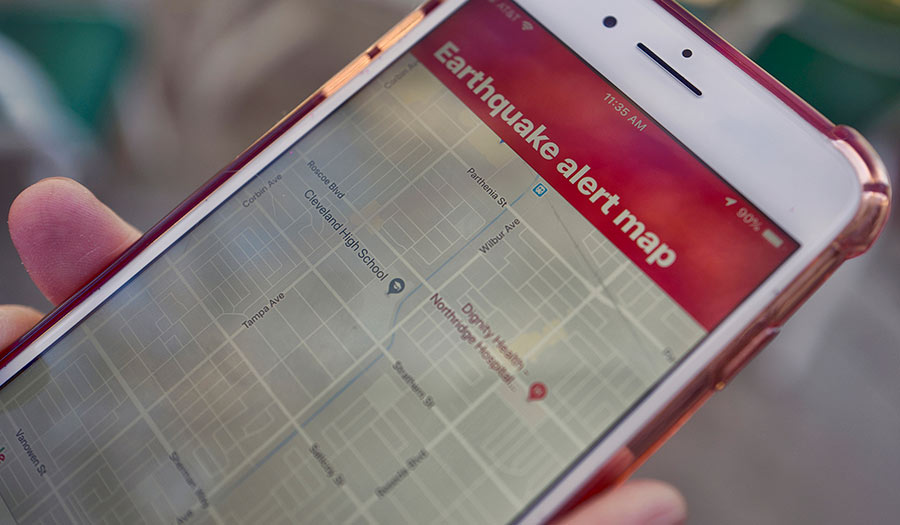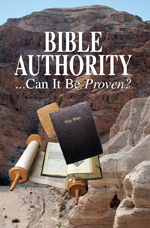 AP/Richard Vogel
AP/Richard Vogel
World News Desk
Learn the why behind the headlines.
Subscribe to the Real Truth for FREE news and analysis.
Subscribe NowPeople in Oregon will be better prepared for earthquakes—particularly important in the Pacific Northwest because experts say “the big one” is coming—as an early warning system launched on March 11, the 10th anniversary of a devastating quake and tsunami in Japan.
California already has the system, while Washington state will join in May to complete coverage of the West Coast. The ShakeAlert system operated by the U.S. Geological Survey uses seismographic sensors to detect significant earthquakes quickly so alerts reach smartphones and people can seek cover before the shaking starts.
“It’s very important that [the three states] are all partners in ShakeAlert, because earthquakes don’t respect geographic boundaries, and we have huge population centers all across the West Coast where earthquake risk is the highest in the contiguous U.S.,” said Gabriel Lotto, ShakeAlert user engagement facilitator for the Pacific Northwest Seismic Network.
Earthquakes in the Cascadia subduction zone, which extends from the ocean off Northern California to Canada’s Vancouver Island, have an average magnitude of around 9, making them among the world’s biggest.
A quake in that zone has a 37 percent probability of happening off Oregon in the next 50 years, with a slightly lower chance of one striking near Washington state, according to Chris Goldfinger, an Oregon State University professor and earthquake geologist.
“When a Cascadia event happens, the critical seconds of notice ShakeAlert warnings provide will save lives and reduce damage to important lifeline systems,” Oregon Governor Kate Brown said.
The system cannot predict an earthquake but can give people a jump on seeking cover from falling objects and time to brace themselves.
When an earthquake is detected, people who have alerts activated on their smartphones will get a message saying, “Earthquake detected! Drop, cover, hold on. Protect yourself.” Mobile apps also carry the alerts.
Jenny Crayne of the Oregon Museum of Science and Industry told reporters Wednesday that the system works by detecting an initial wave sent out by an earthquake.
“The P wave is first and fast. It travels out and ahead of the S wave, and it is not producing the shaking,” Ms. Crayne said. “The S wave is slower and second, and it’s the one that produces the real shaking and damage that you experience during an earthquake.”
The system’s sensors can rapidly detect that initial P wave and send that data to a processing center, where algorithms can determine and estimate the geographical extent of the earthquake, the magnitude and the expected shaking intensity in different areas, Ms. Crayne said.
If an area is expected to experience significant shaking, people there will receive an alert. But those at or very close to the epicenter of the quake will not receive the warning in time because the waves will be too close together.
ShakeAlert can also slow trains to reduce derailments, open firehouse doors so they do not jam shut and protect water systems with automatic shutoffs.
Installing early-warning shutoffs to things like electrical utilities and wastewater systems also are being considered, said Robert de Groot of the U.S. Geological Survey in Pasadena, California.
In action in California, an alert was sent to some 2.5 million people as a magnitude 4.5 earthquake struck the Los Angeles suburb of El Monte last September, Mr. de Groot said.
The rollout in Oregon coincides with the 10th anniversary of Japan’s magnitude 9.0 quake and tsunami that killed more than 18,000 people and caused meltdowns at the Fukushima Daiichi nuclear plant.
“As we commemorate the 10th anniversary of the devastating Tohoku earthquake, we are committed to improving earthquake safety in the Pacific Northwest through our strong university and state partnerships,” USGS Associate Director David Applegate said.
What Is the “Big One”?
According to the USGS, the “big one” refers to an earthquake of 7.8 magnitude or greater on the southern San Andreas fault. Yet the term has been used describe an anticipated intense earthquake all along the West Coast.
The USGS conducted a simulation of such a temblor hitting the southern San Andreas fault at 9:00 a.m. These were the results:
• 1,800 deaths
• 1,600 fires ignited, most of them large
• 750 people trapped inside buildings with complete collapse
• 270,000 people immediately displaced from their homes
• 50,000 people needing emergency care
• Search and rescue efforts would last for nearly three weeks
• $213 billion in economic losses
Seismic History
Over millennia, many have perceived their narrow escape from earthquakes or similar situations as a wake-up call from a higher power. Others simply view their occurrence as time and chance.
Even 113 years after a 7.9-magnitude earthquake struck San Francisco in 1906, the devastation and damage stands as a stark reminder of what geologic forces in California have to offer.
“That second upheaval was heartrending,” Fred J. Hewitt wrote in “Wreck of City’s Buildings Awful” in the San Francisco Examiner, April 20, 1906. “It made me think of the loved ones in different portions of the country. It turned my stomach, gave me a heartache that I will never forget and caused me to sink upon my knees and pray to the Almighty God that me and mine should escape the awful fate I knew was coming to so many thousands.”
Another eyewitness recounted: “Remaining in bed—it can hardly be said ‘quietly,’ with all the throbbing of the house—until the shock had passed, wondering and commenting on what was happening outside and how it was affecting the tall buildings down town, and whether it might bind our doors so that we could not get out of our room, all the time with a calming subconsciousness of the good Providence of Almighty God as our ‘Refuge, though the earth be moved.’”
This man paraphrased Psalm 46, “Therefore will not we fear, though the earth be removed…” (vs. 2).
Realizing their futility against the cataclysmic forces in nature, people are moved to seek a higher power.
This is not new. The Bible records several accounts of earthquakes—small and great—used to get people’s attention.
The prophet Elijah was prepared to hear God’s voice by a strong wind, an earthquake and fire (I Kgs. 19:11-14).
When ancient Israel was in the wilderness, God used an earthquake to stop a rebellion: “as he [Moses] had made an end of speaking all these words, that the ground clave asunder that was under them: and the earth opened her mouth, and swallowed them up, and their houses, and all the men that appertained unto Korah, and all their goods. They, and all that appertained to them, went down alive into the pit, and the earth closed upon them: and they perished from among the congregation” (Num. 16:31-33).
After Jesus Christ died, God sent a powerful earthquake that stirred those observing: “Now when the centurion, and they that were with him, watching Jesus, saw the earthquake…they feared greatly, saying, Truly this was the Son of God” (Matt. 27:54).
None of these events were coincidence or “geology moving on.” They were all specific events that a Supreme Being used to fulfill His purpose—waking people up to present reality. They reveal God’s pattern for working with humanity, a pattern that His Word indicates will be used again.
The Bible speaks about events when God will again use earthquakes to get a message across and capture attention. Read Matthew 24:7, Mark 13:8 and Luke 21:11.
The prophet Haggai recorded: “For thus says the Lord of hosts; yet once, it is a little while, and I will shake the heavens, and the earth, and the sea, and the dry land” (2:6). Isaiah, another prophet, added to this by describing how this earthquake will affect the planet’s entire topography (Isa. 40:4).
This will be an earthquake the likes of which the Earth has never seen.
A Choice
Billions of people are wholly unprepared for an event of such magnitude, partly because most dismiss that it is even possible. The USGS website, when answering “Can ‘MegaQuakes’ really happen?” states: “No, earthquakes of magnitude 10 or larger cannot happen. The magnitude of an earthquake is related to the length of the fault on which it occurs. That is, the longer the fault, the larger the earthquake. A fault is a break in the rocks that make up the Earth’s crust, along which rocks on either side have moved past each other. No fault long enough to generate a magnitude 10 earthquake is known to exist, and if it did, it would extend around most of the planet.”
Of course, looking at physical properties alone, this is logical. So what proof do you have to believe in the words of a seemingly archaic book?
You do not have to take chances on whether a “Big One” is coming. You can prove God’s existence and that the Bible is His Word—and in doing so turn to Him for protection.
Our book Bible Authority...Can It Be Proven? will provide the facts you need to trust God at His Word, and to escape what is coming!
This article contains information from The Associated Press.
Other Related Items:
More on Related Topics:
- After 20 Years, Indonesia’s Post-Tsunami Generation Stays Vigilant for Future Disasters
- India’s Capital Chokes as Air Pollution Levels Hit 50 Times the Safe Limit
- Record-setting Dry Conditions Threaten More U.S. Wildfires, Drinking Water Supplies
- Death Toll from Spanish Floods Climbs as Shock Turns to Anger and Frustration



